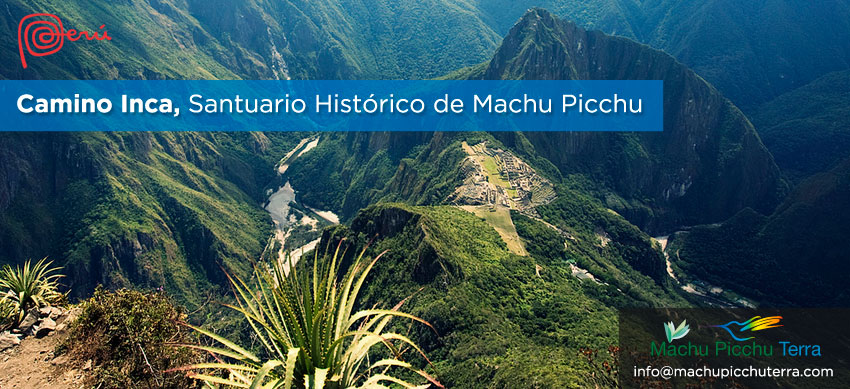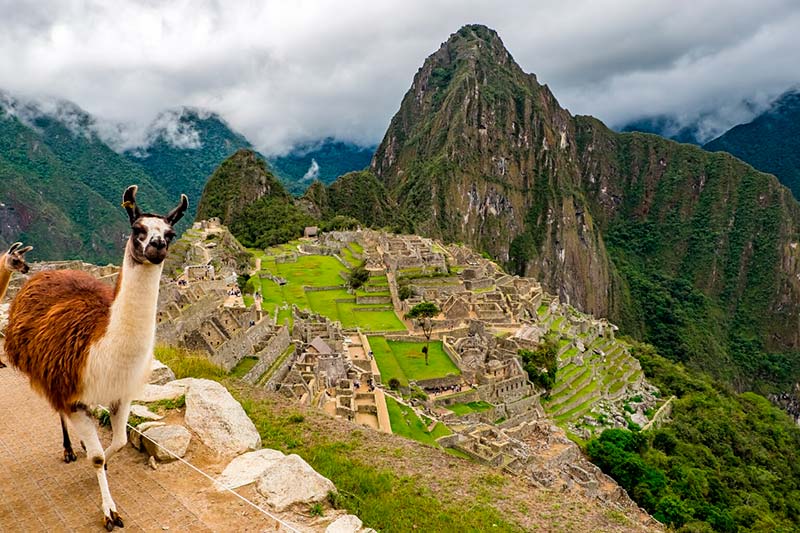
The Inca Trail offers some of the most incredible landscapes of the Historic Sanctuary of Machu Picchu. From high Andean mountains that exceed 4 thousand meters in height to dense vegetation of the jungle of Cusco. In this natural and historical space you can see various types of plants, trees, flowers, butterflies, birds and even mammals. The best way to appreciate the landscapes and get to know its flora and fauna is through the 4-day Inca Trail hiking route.
The Inca Trail runs through 39 kilometers of routes built by the Incas along the current Historic Sanctuary of Machu Picchu. This adventure is full of incredible landscapes such as the Malaga pass, the archaeological site of Wiñayhuayna, the exuberant vegetation or the diversity of fauna in the place. However, definitely, the most beautiful landscape corresponds to Machu Picchu, one of the 7 wonders of the modern world.
What is the Historic Sanctuary of Machu Picchu?
A Historic Sanctuary is an area protected by the Peruvian State due to its historical and natural importance. In the country there are in total four sites of this type: a) the Historic Sanctuary of Chacamarca, b) the Historic Sanctuary of the Pampa de Ayacucho, c) the Historic Sanctuary of Pomac Forest and finally d) the Historic Sanctuary of Machu Picchu.
The Historic Sanctuary of Machu Picchu is located 130 kilometers northeast of Cusco. It covers an area of more than 32,500 hectares. In their territory the Incas built dozens of archaeological sites. Definitely the most famous of all is Machupicchu, recognized as one of the 7 wonders of the modern world. Tourists who do the Inca Trail visit this sanctuary where they can enjoy incredible landscapes.
Geography varies throughout the sanctuary. For example, the area of Abra Málaga, located at 4,200 meters above sea level, offers surprising mountainous landscapes. Likewise, the Machu Picchu sector, located about 2,430 meters above sea level, where it is possible to enjoy the greenery of the Cusco jungle.
How is the landscape?
The landscape of the Historic Sanctuary of Machu Picchu has a great environmental value with areas of jungle brow, surrounded by a deep canyon that forms the Urubamba River. The projection of the eastern chain of the Andes, is presented, like an imposing landscape, with imposing snow-capped mountains and a vast region of high jungle.
Along the Inca Trail part of the Inca road network is covered, the famous qhapac ñan. These paths are also part of the landscape. Andean settlers who inhabit this Andean region pass through its trails. The presence of camelids such as llamas and alpacas stands out.
Some of the most photographed landscapes during the Inca Trail are: the Malaga pass, the Vilcanota river, the LLactapata archaeological site, the Runkuracay archaeological site, the Wiñayhuayna archaeological site, the Phuyupatamarca archaeological site and, of course, Machu Picchu.
The fauna in the Historic Sanctuary of Machu Picchu
The landscape presents a tropical fauna with a diversity of species. There are species such as the spectacled bear, Andean deer, vizcachas, torrent duck, llamas, cock of the rocks as well as more than 400 species of butterflies, 200 species of birds, insects and a fauna typical of the jungle eyebrow.
Tourists can photograph these species, such as the spectacled bear. However, approaching or harassing them is prohibited. Remember that it is an area protected by the Peruvian State and it is not allowed to attack the landscapes, flora or natural fauna of the place.
The flora in the Historic Sanctuary of Machu Picchu
Today, the landscape of Machu Picchu is a meeting point of the Amazon with the Andes. It is also a space where you can find a great diversity of plant life.
Some of the most notable species in the Historic Sanctuary of Machu Picchu are: molles, cedars, queñuales, ferns, puyas, floripondios, carnations and, the most famous species, orchids.
On the Inca Trail there are more than 400 species of orchids, a flower that is characterized by the symmetry of its petals and the various colors that adorn it. One of the subspecies of orchids is the ‘Wiñayhuayna’ (Quechua word that means ‘forever young’ or the flower ‘waqanki’ that means ‘tears’.

Macchu Picchu
Additional information about landscapes
Photos are allowed in the Historic Sanctuary of Machu Picchu and the Inca Trail. However, the Peruvian authorities do not allow filming with professional equipment.
The Inca Trail is a very popular hiking route due to its beautiful landscapes. To carry out this route, it is necessary to hire a tour through an authorized tourism agency. Due to the high demand for tours, the purchase must be made online 6 or 7 months in advance.
To best enjoy the landscapes, it is recommended to take with you: comfortable sportswear, poncho for rainy days, hat, sunscreen, trekking shoes, suitable backpack and, of course, a good camera.
By Inca Trail Machu Picchu - Last updated, 22-08-2024
Interested in the Inca Trail? Know more about Nature!
- Coca leaf, ideal for trekking in Peru
- The Cantuta flower. Where to find it on the Inca Trail?
- Fauna of the Inca Trail
- Spectacled bear on the Inca Trail to Machu Picchu
- The cock of the rocks on the Inca Trail
- Inca Trail: butterfly observatory
